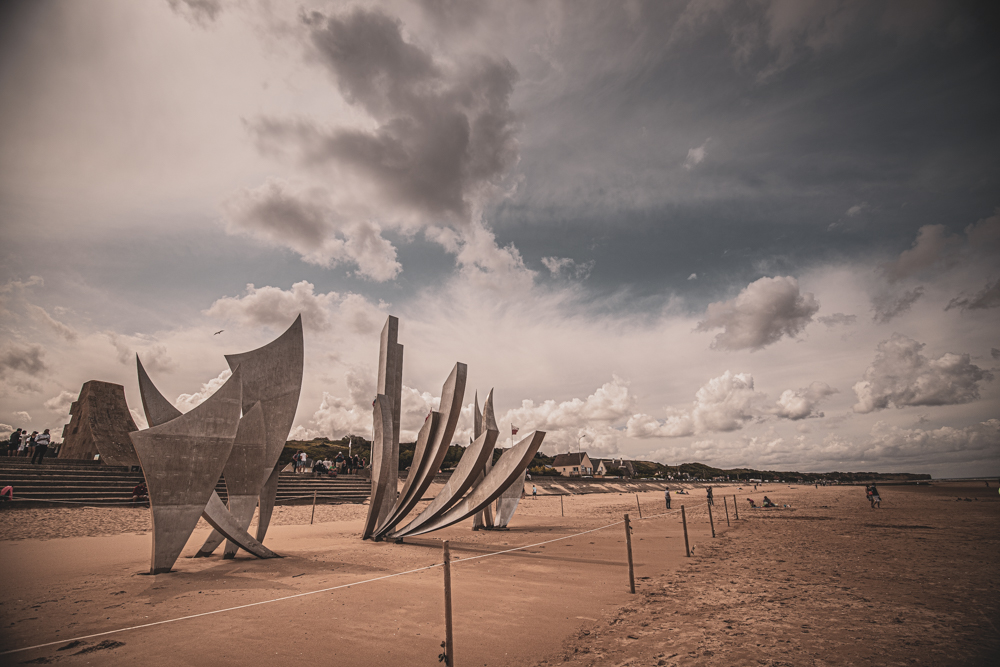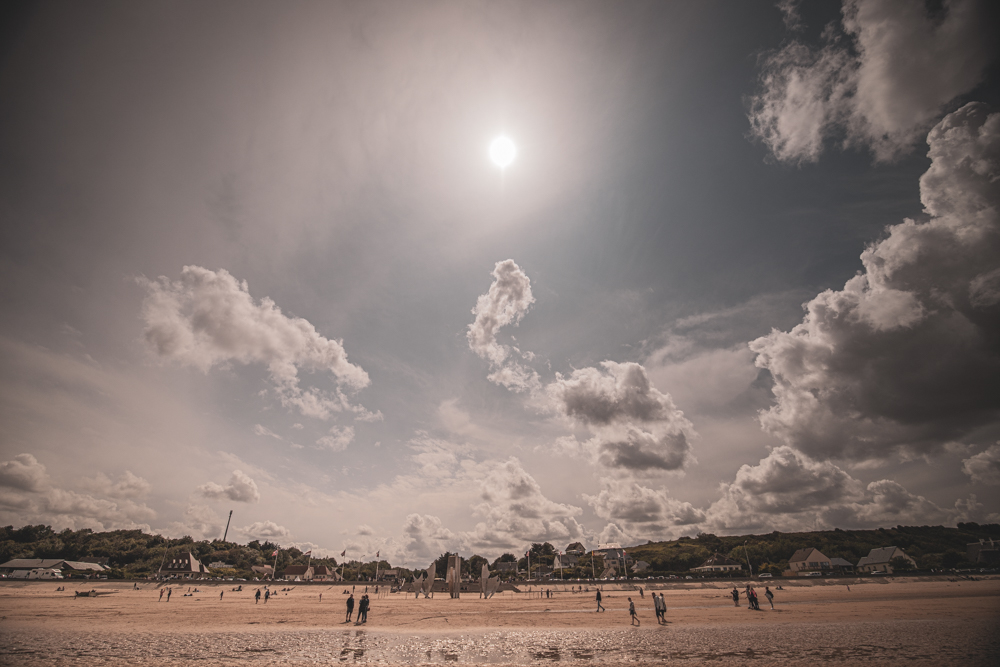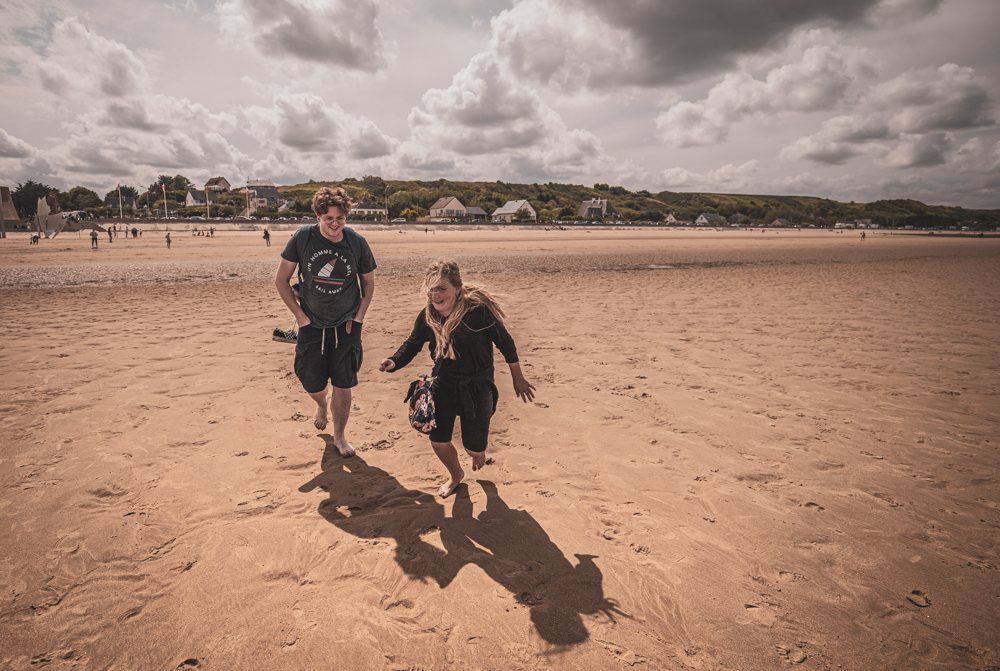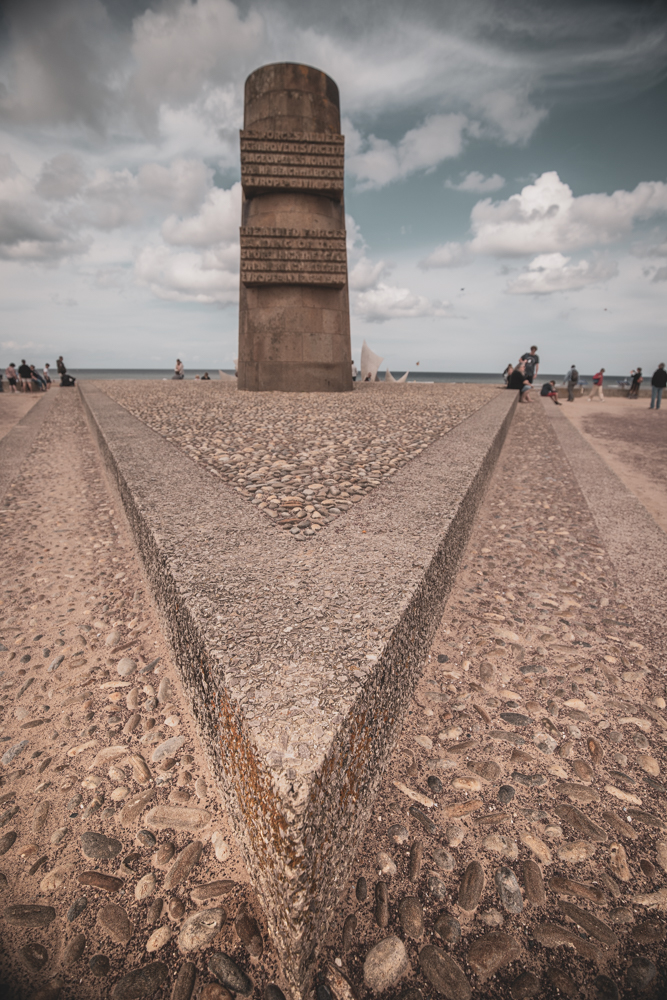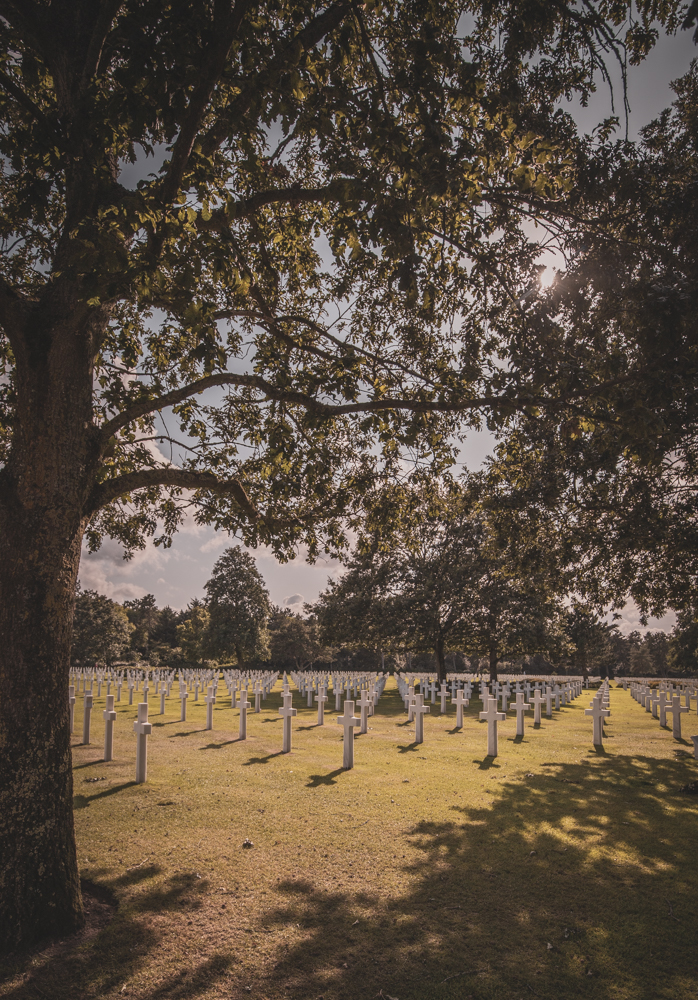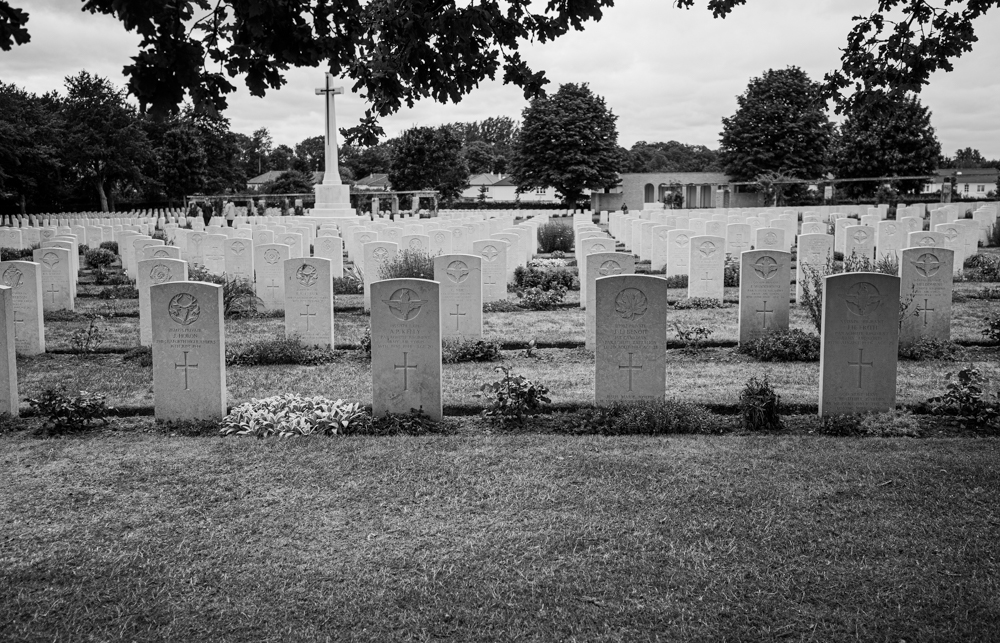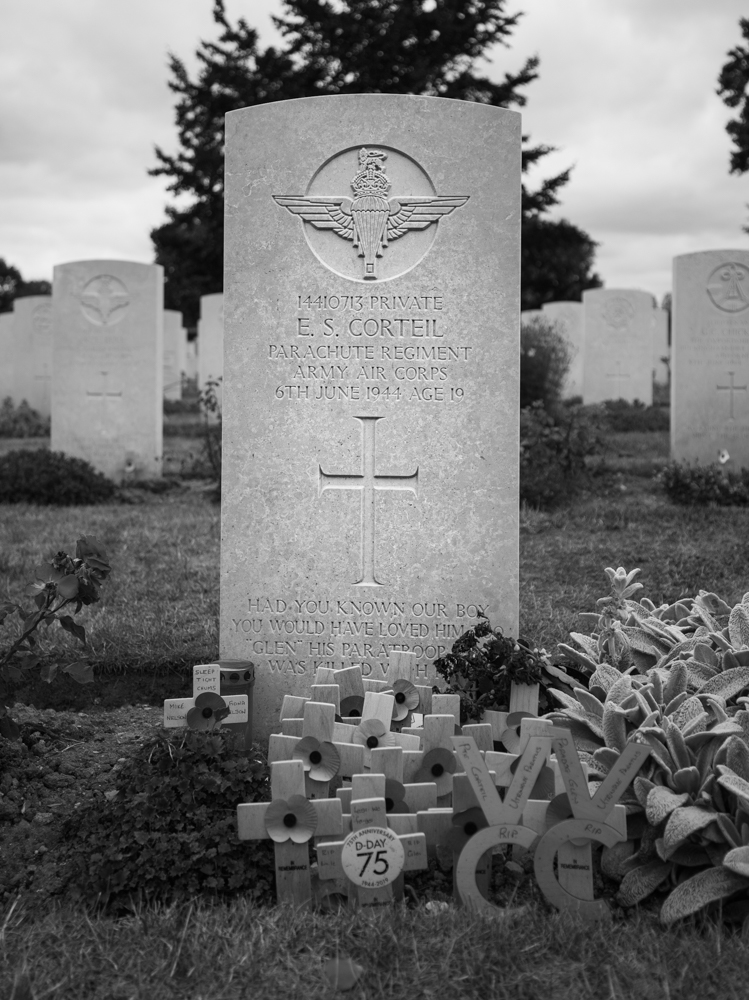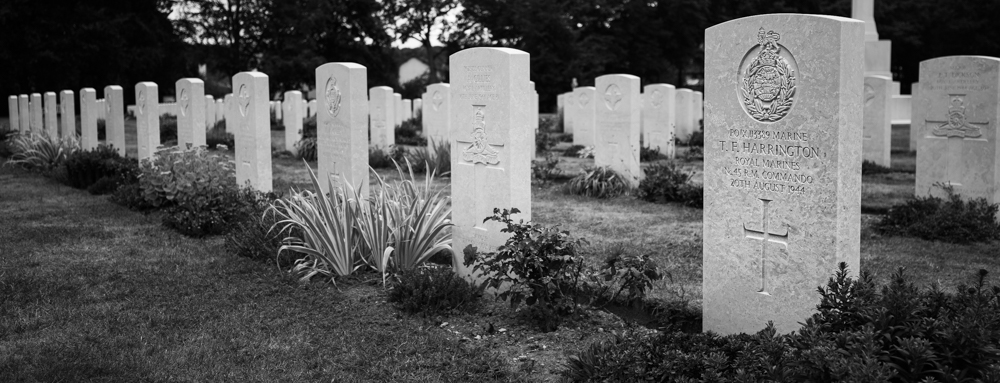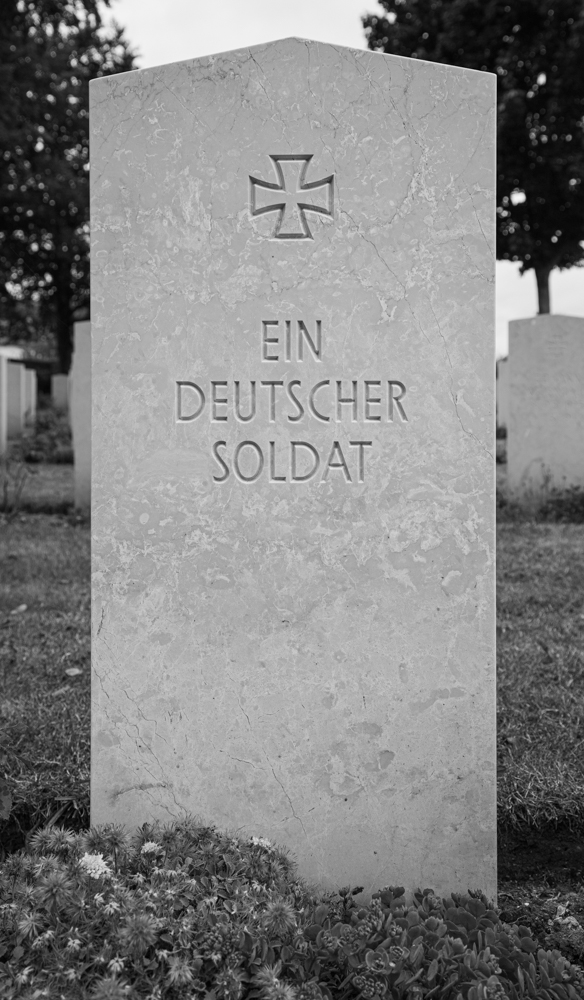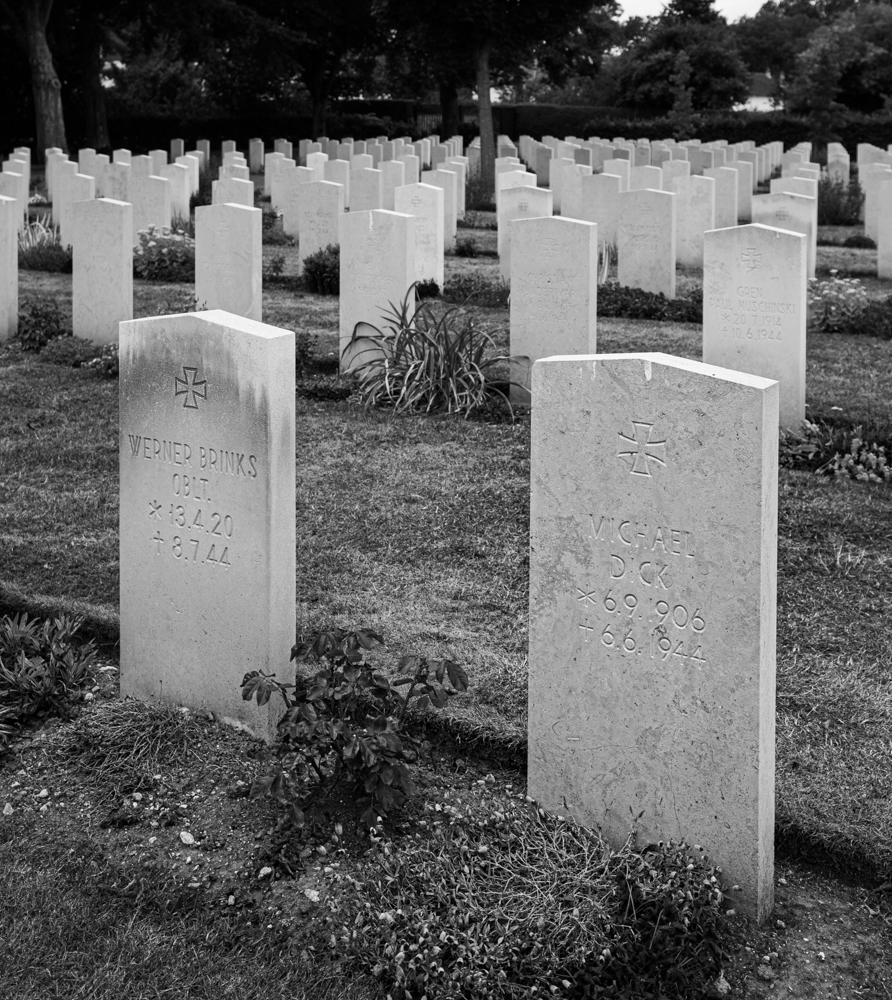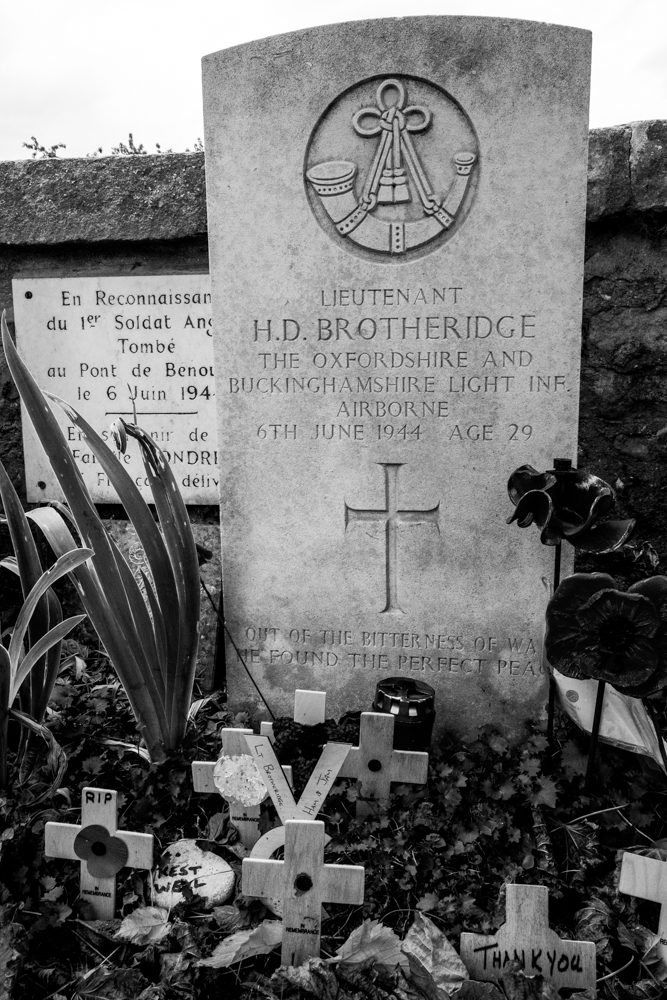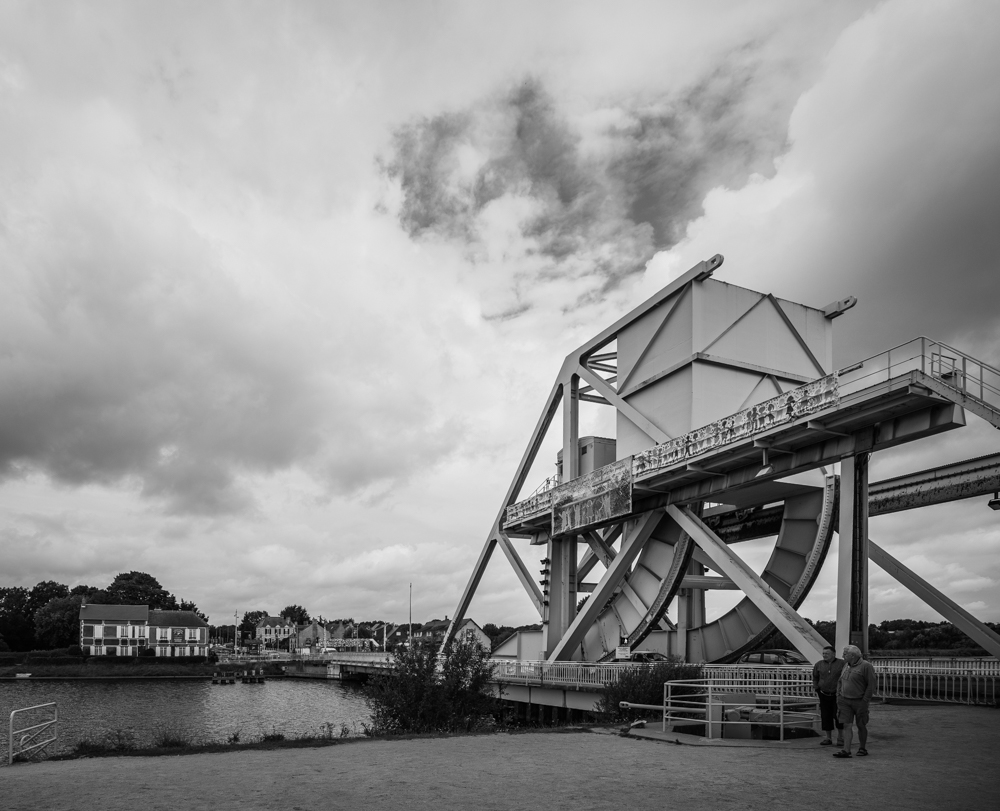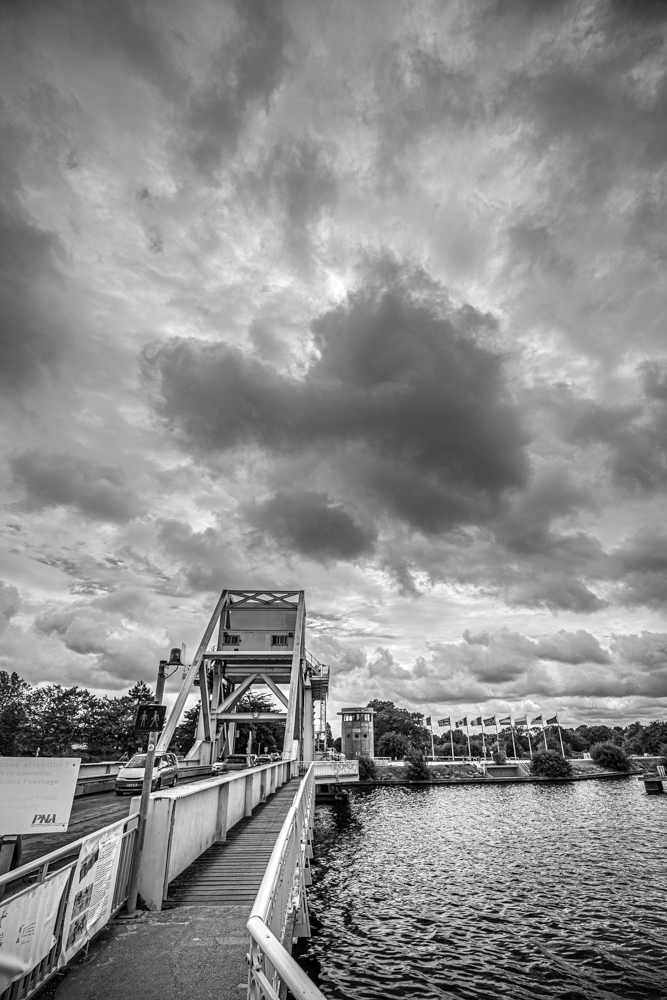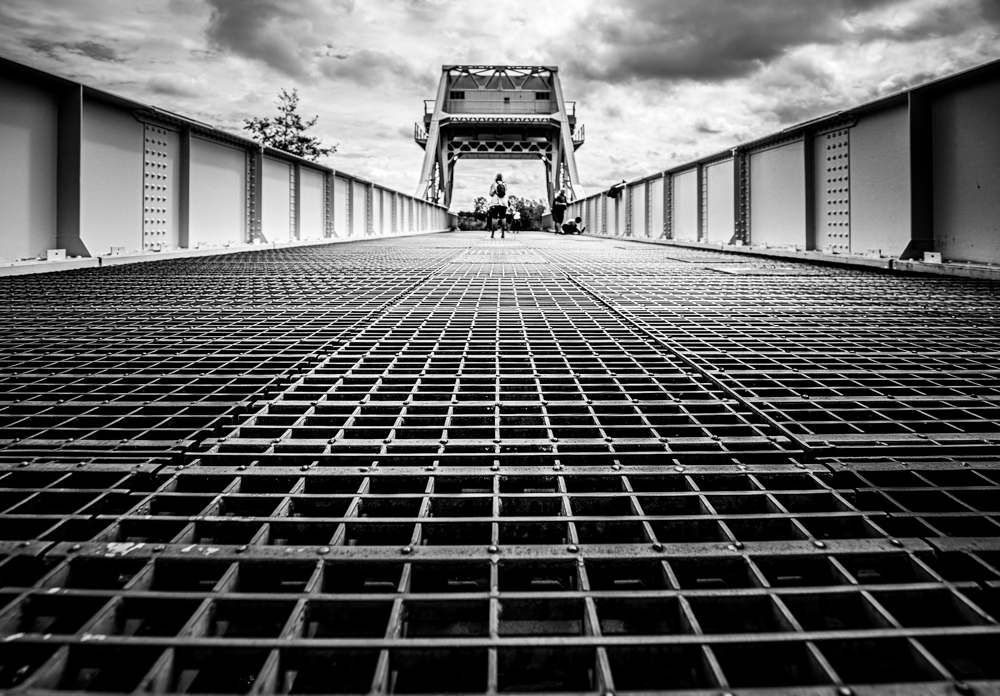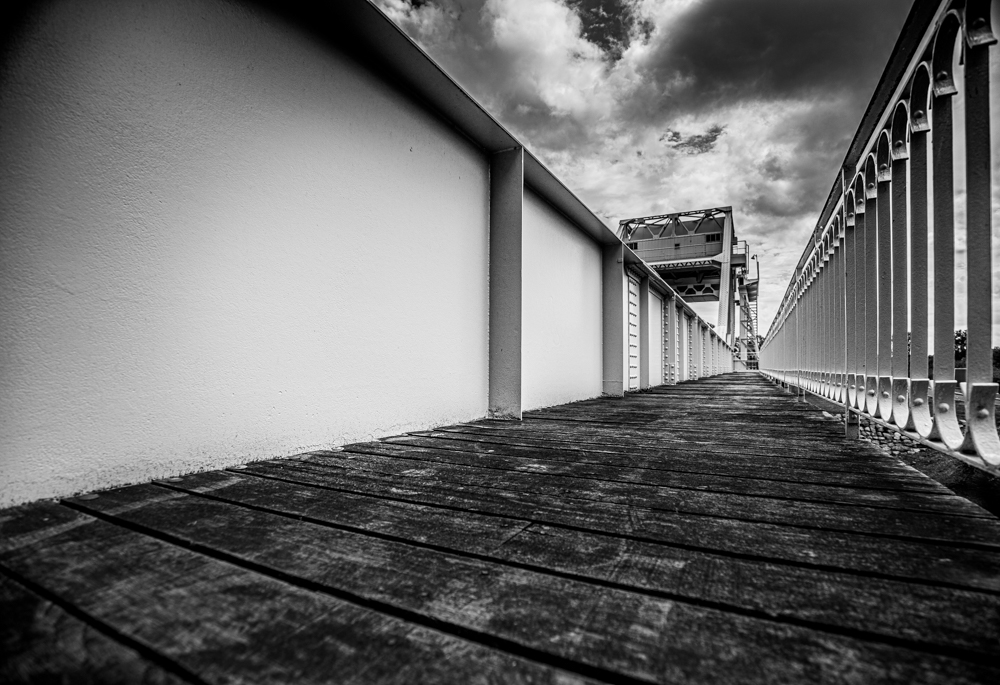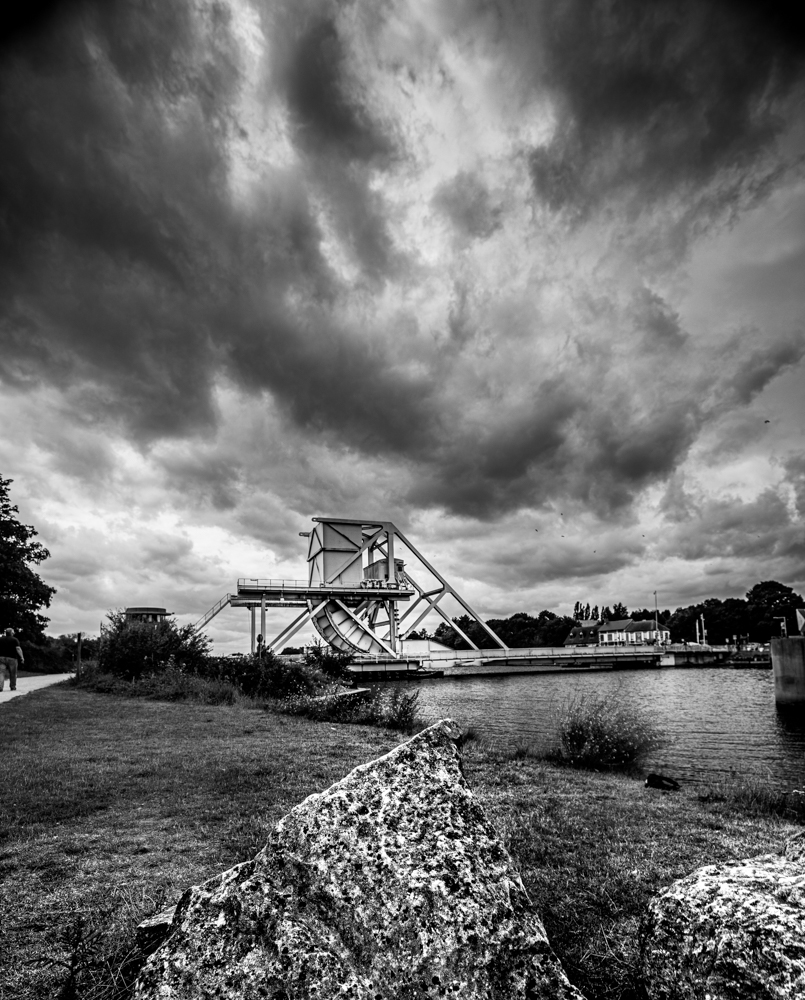Omaha Beach was one of the five beaches that had to be taken on D Day, 6th July 1944. That task was given to the 1st and 29th Infantry Division of the US Army. To say they took a hammering is an understatement, and General Bradley saw the very grave situation, and one stage nearly abandoned the operation. The grit and determination of his men paid off and they took the beach, but the amount of casualties and dead was tremendous, around 2000 men. A great sacrifice was made that day.
Whilst on that beach, I saw American families turn up, and the emotion was visible on their faces. It is almost a spiritual experience for them, and a form of pilgrimage. The dead are remembered, not only by the few that survived, but by the local population , and the French in general. Just next to the beach, there is the American War Cemetery at Coleville sur Mer. The prisitne graves serve as a reminder to those of us that didn’t experience what they did: the horrors of war!
I remember seeing footage of an old veteran who landed on Omaha, saying that the greatest reward they had, was to see children playing on that beach now, enjoying the peace that was earned by those men who lay down their lives on that same beach all those years ago.
I’ve decided to share photos of both the beach and the cemetery with you. The camera used that day was the Canon 6D Mark II with the 16-35mm Canon lens.
